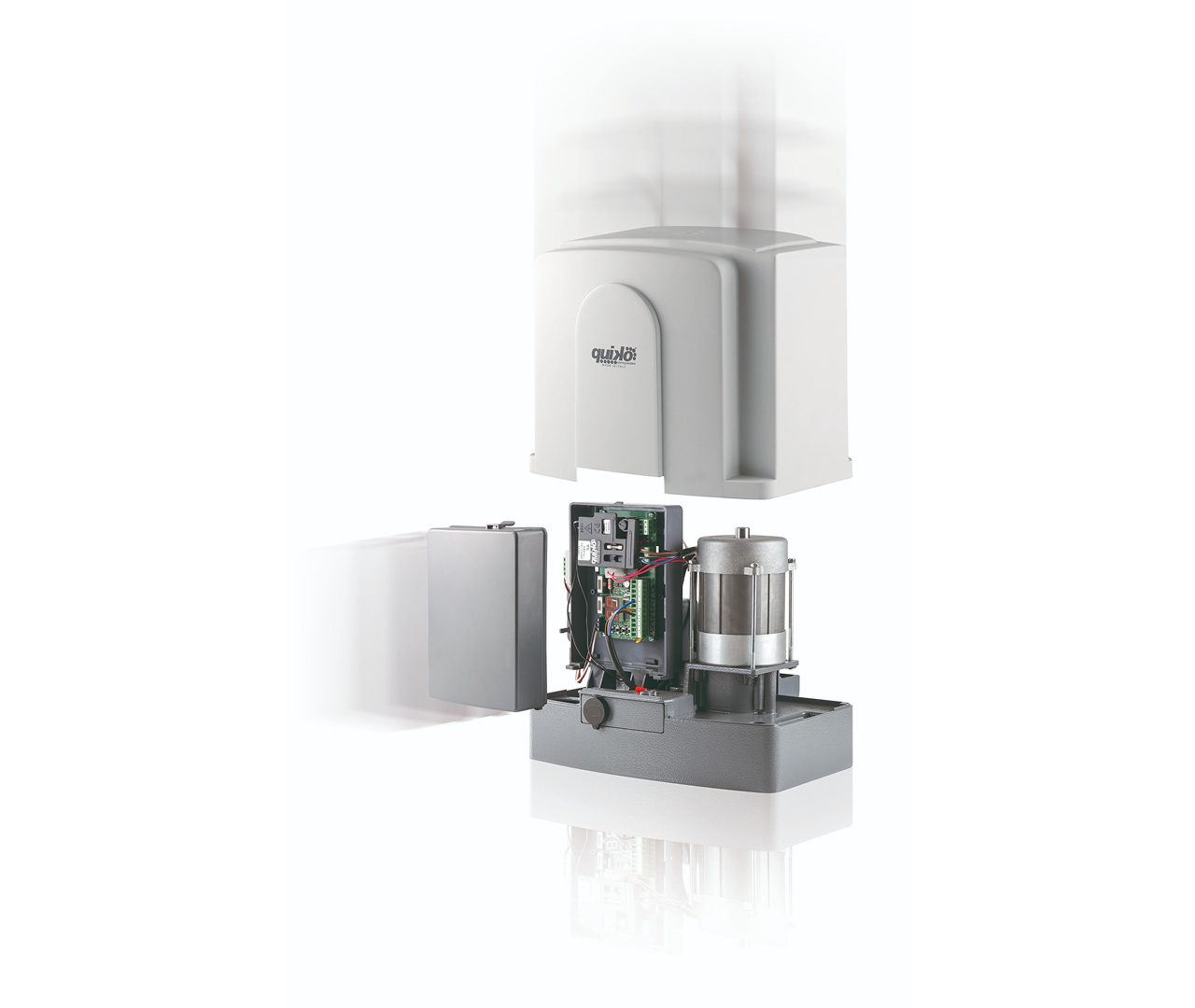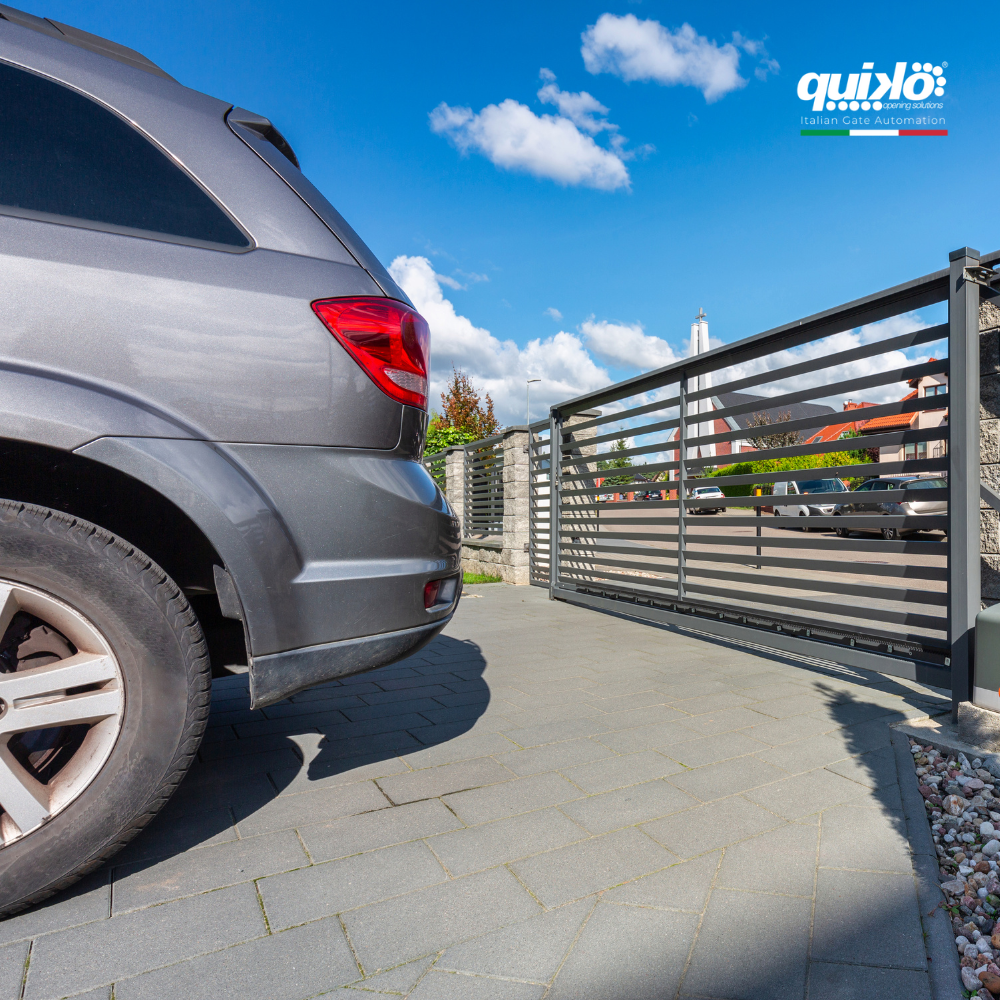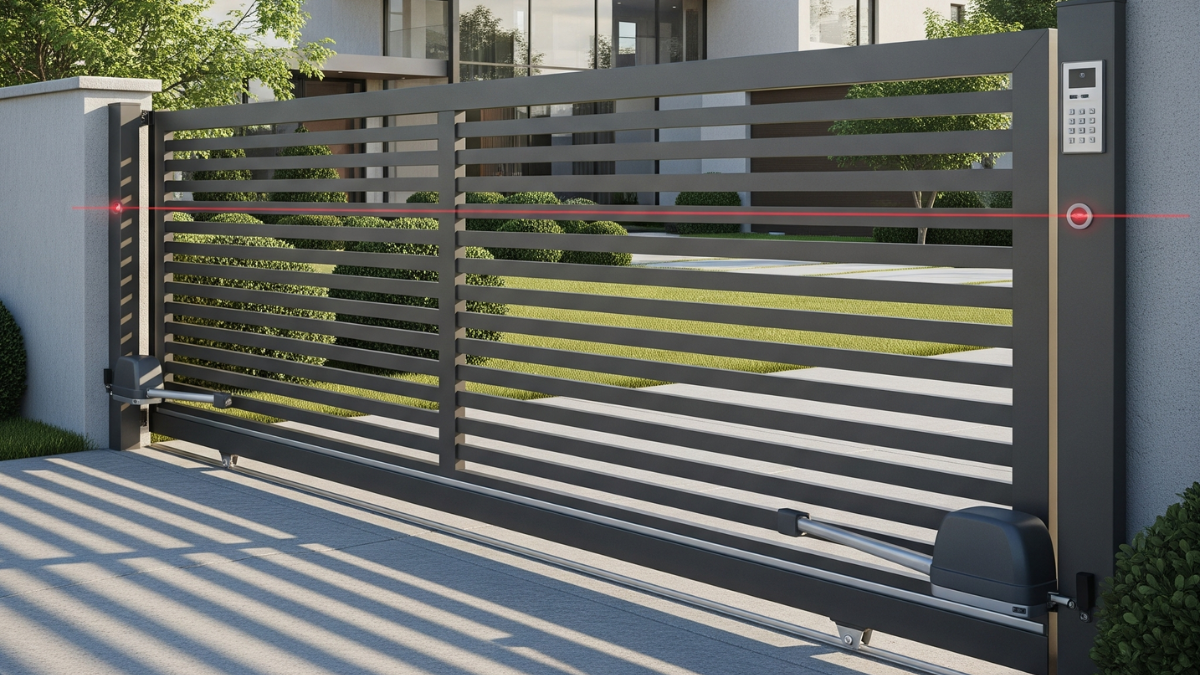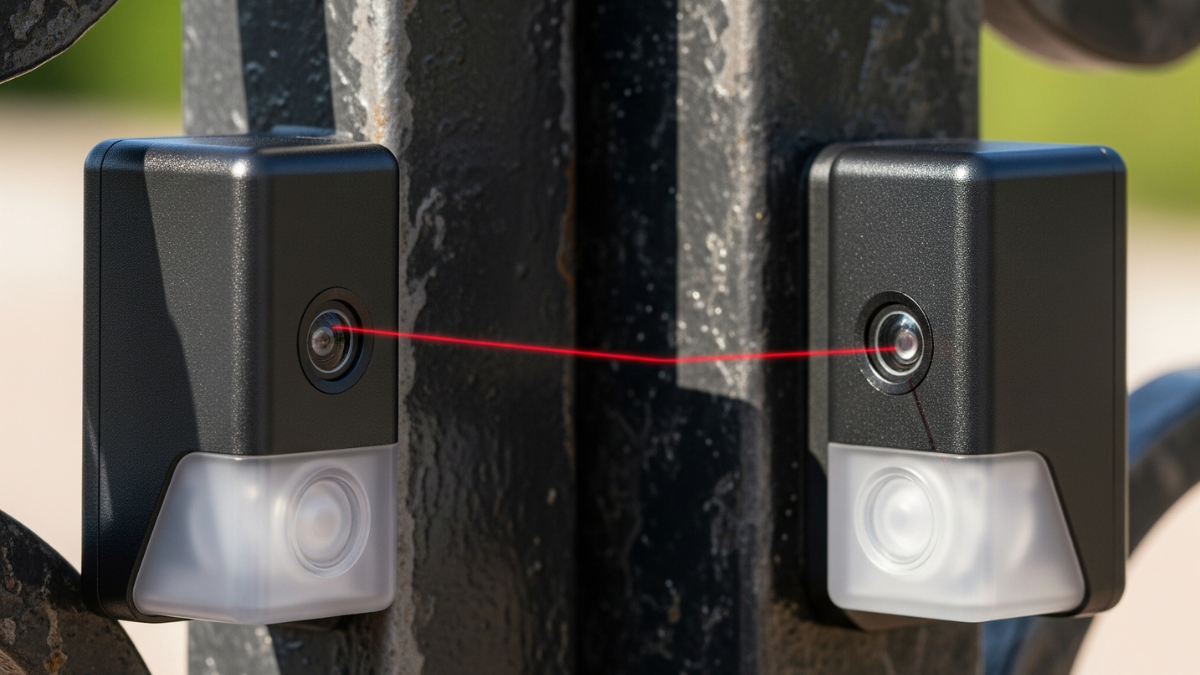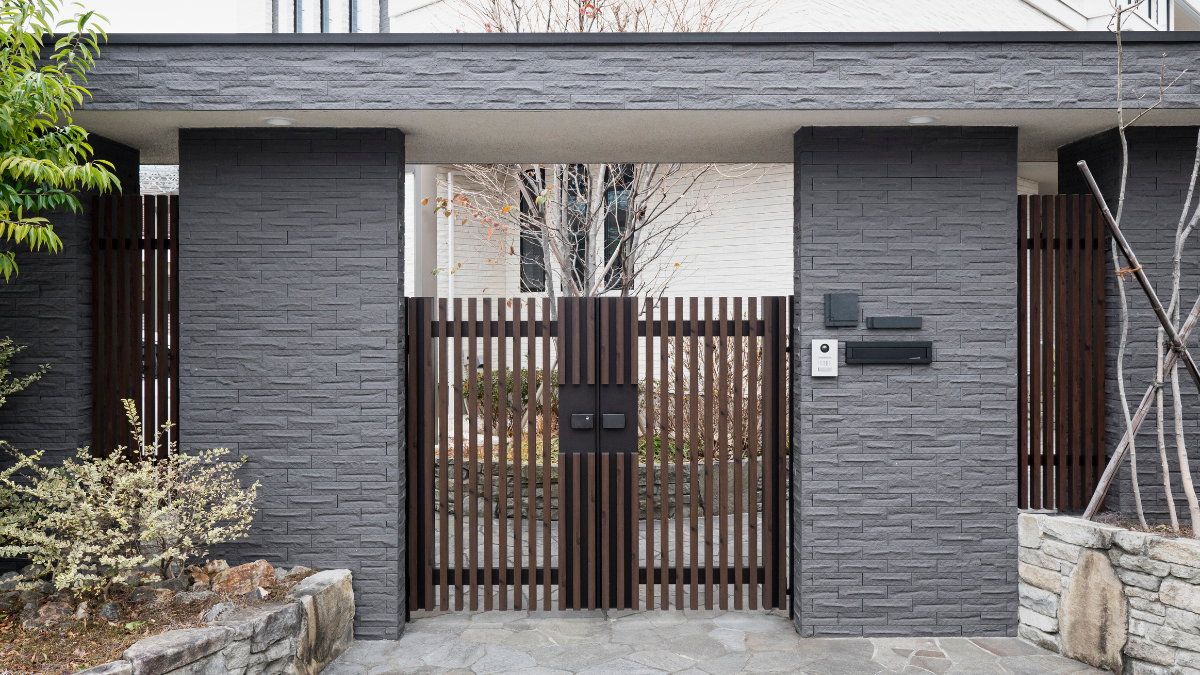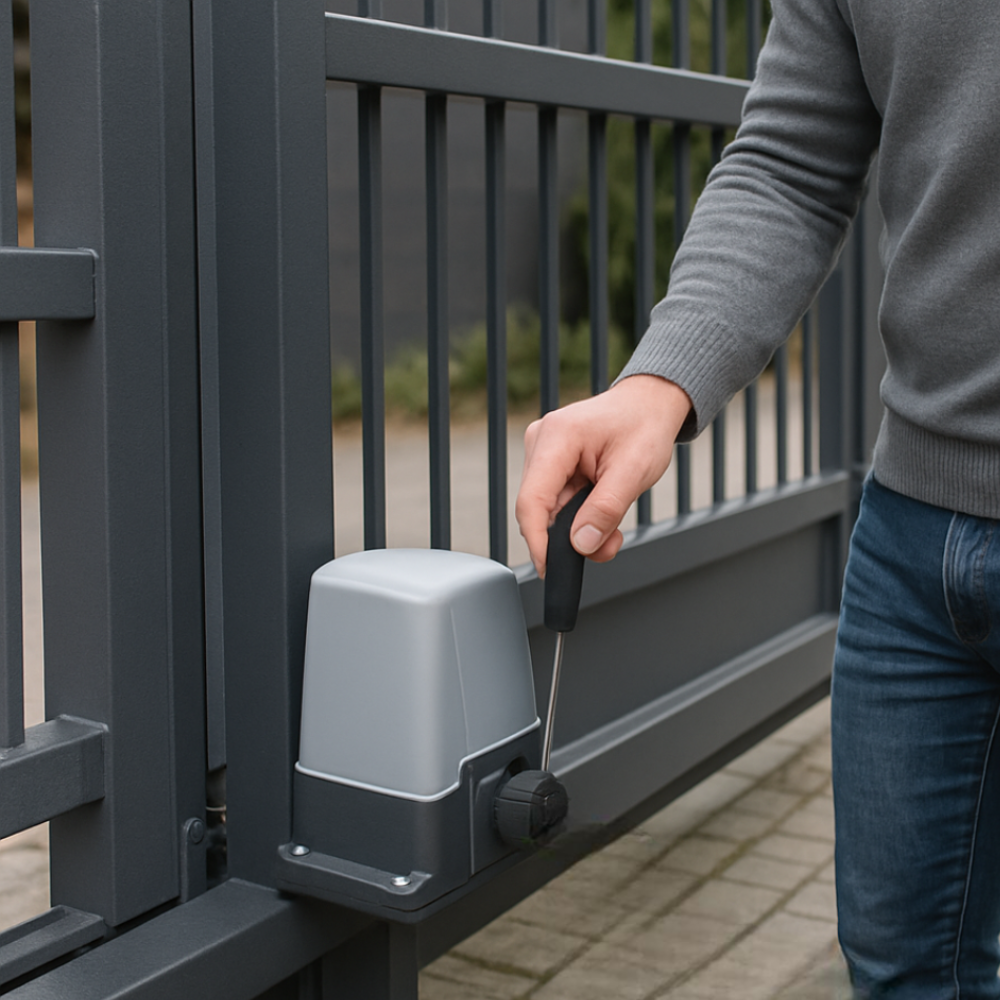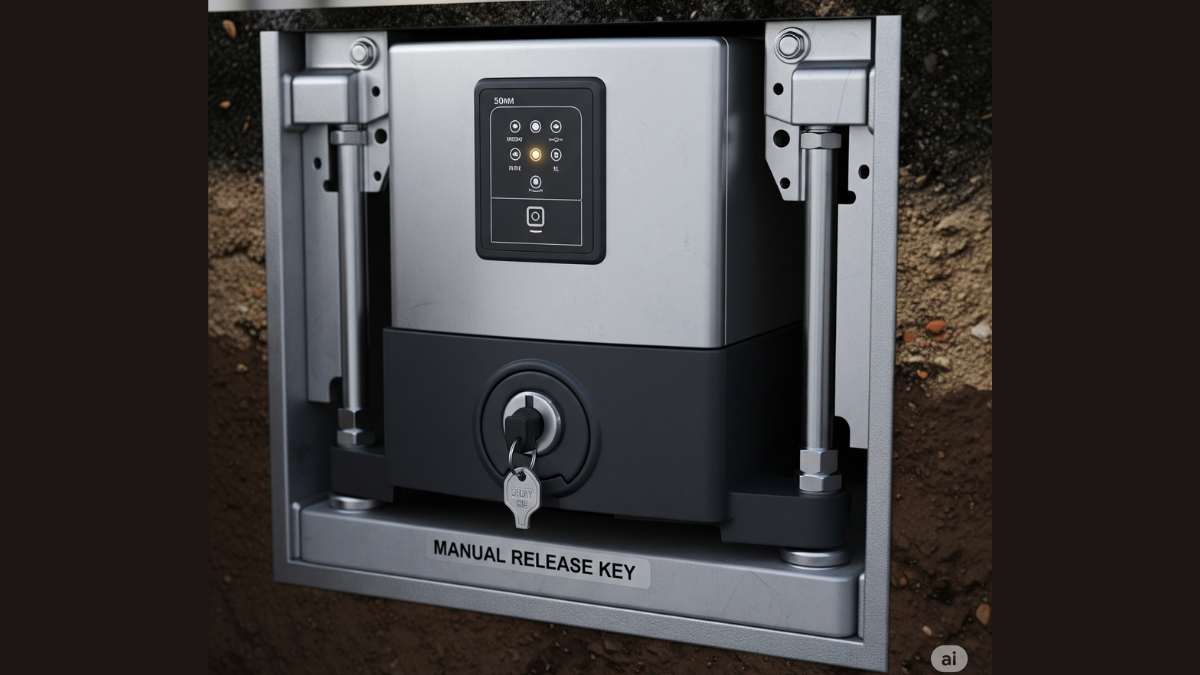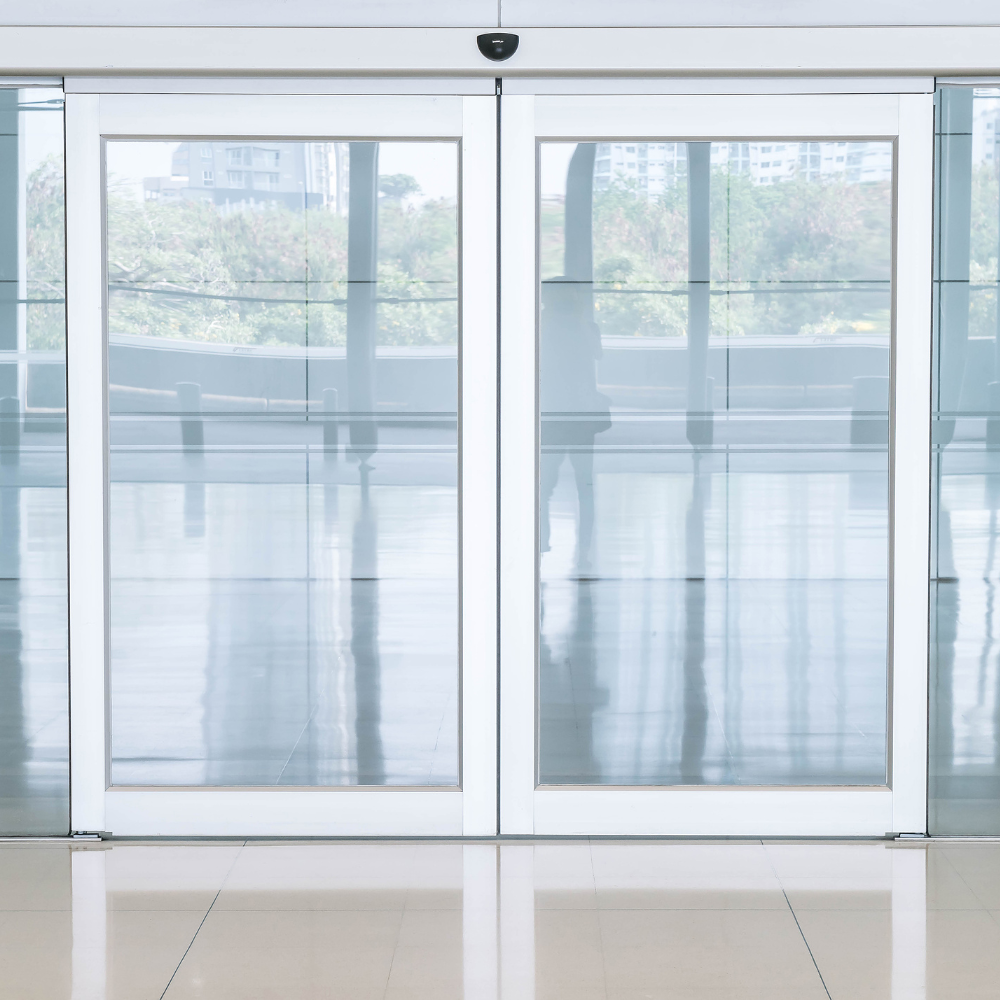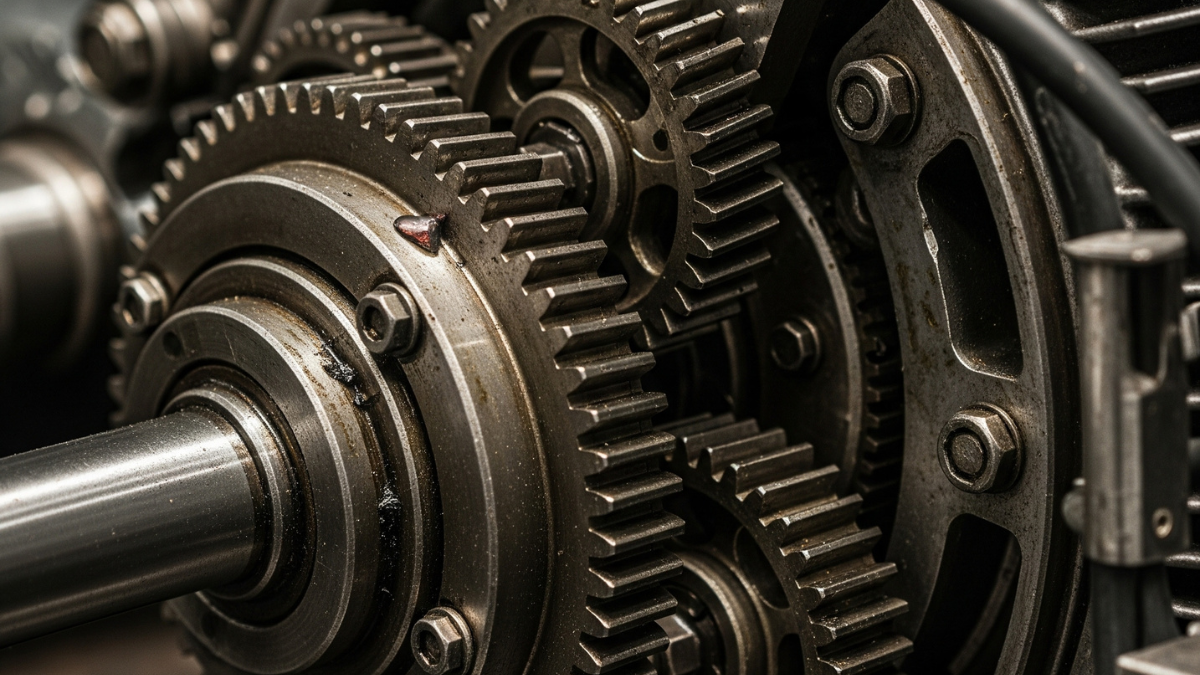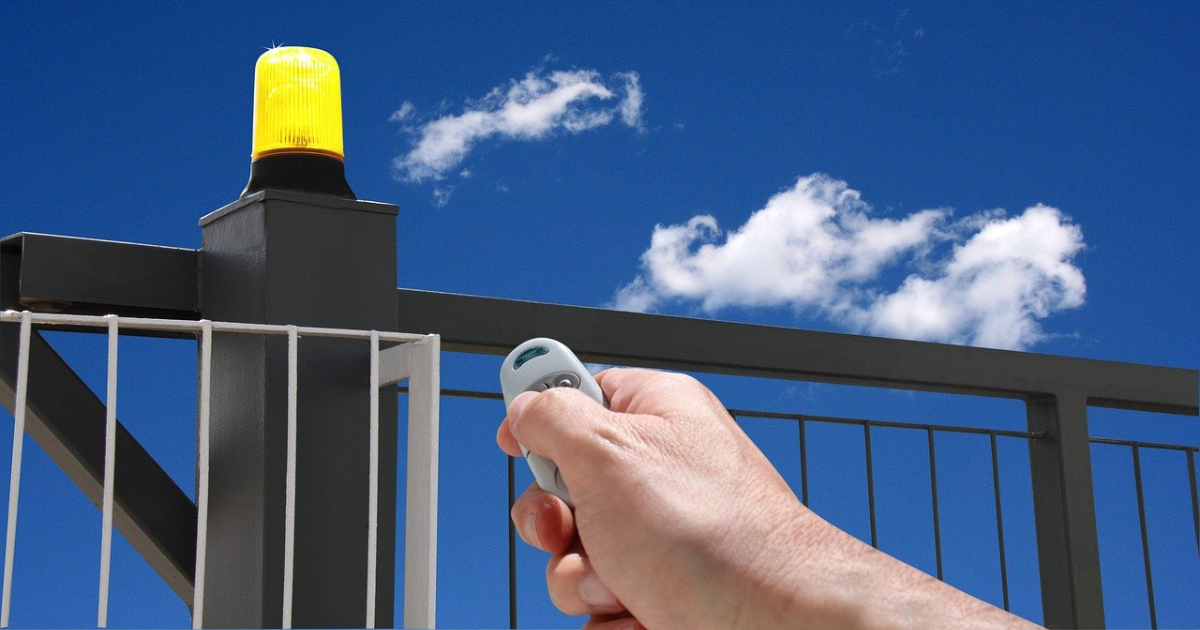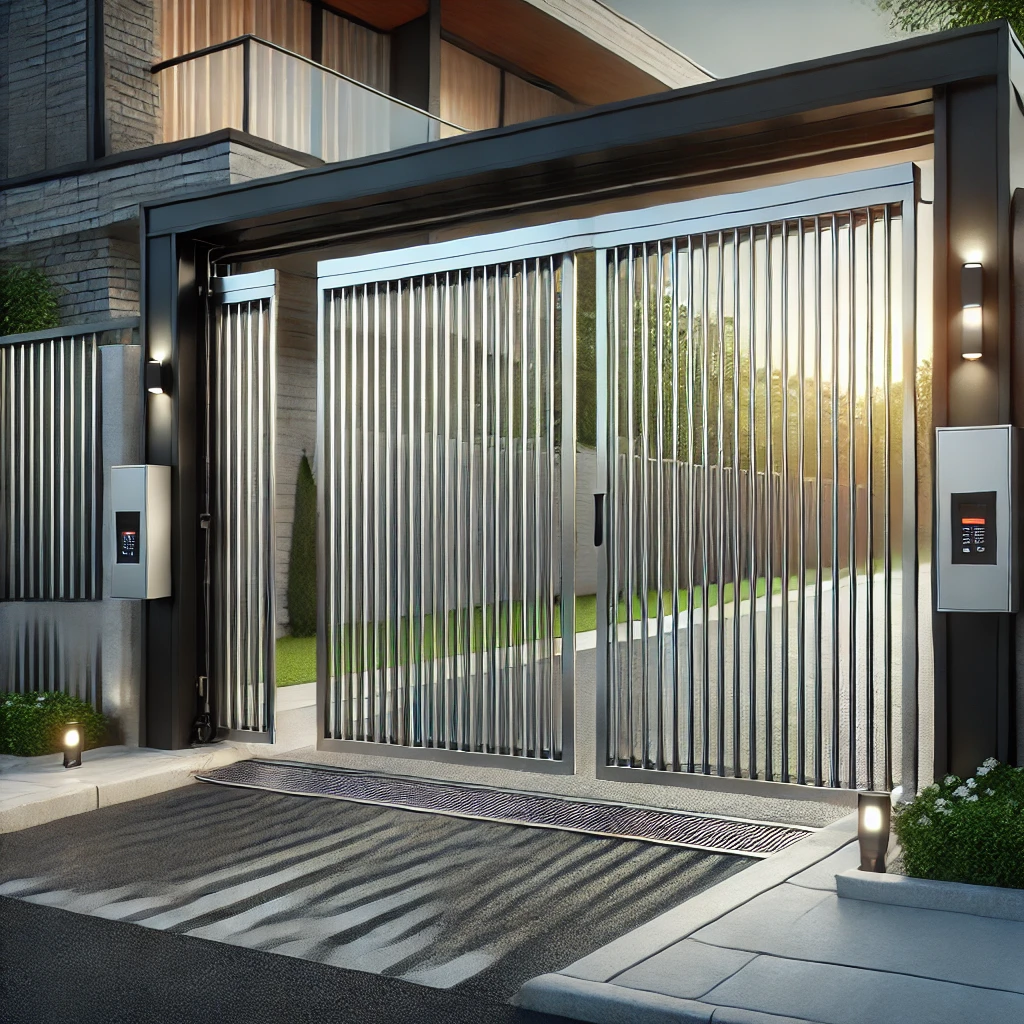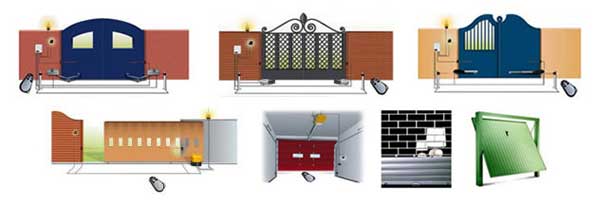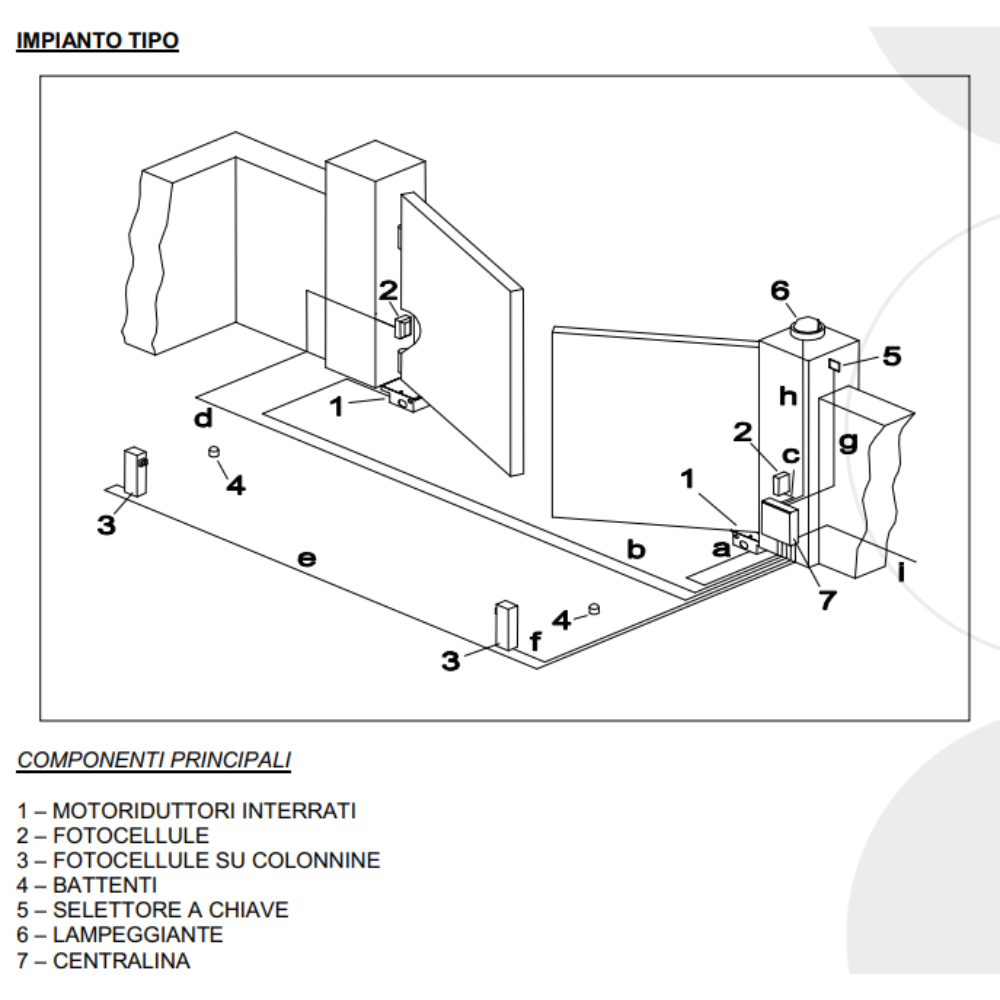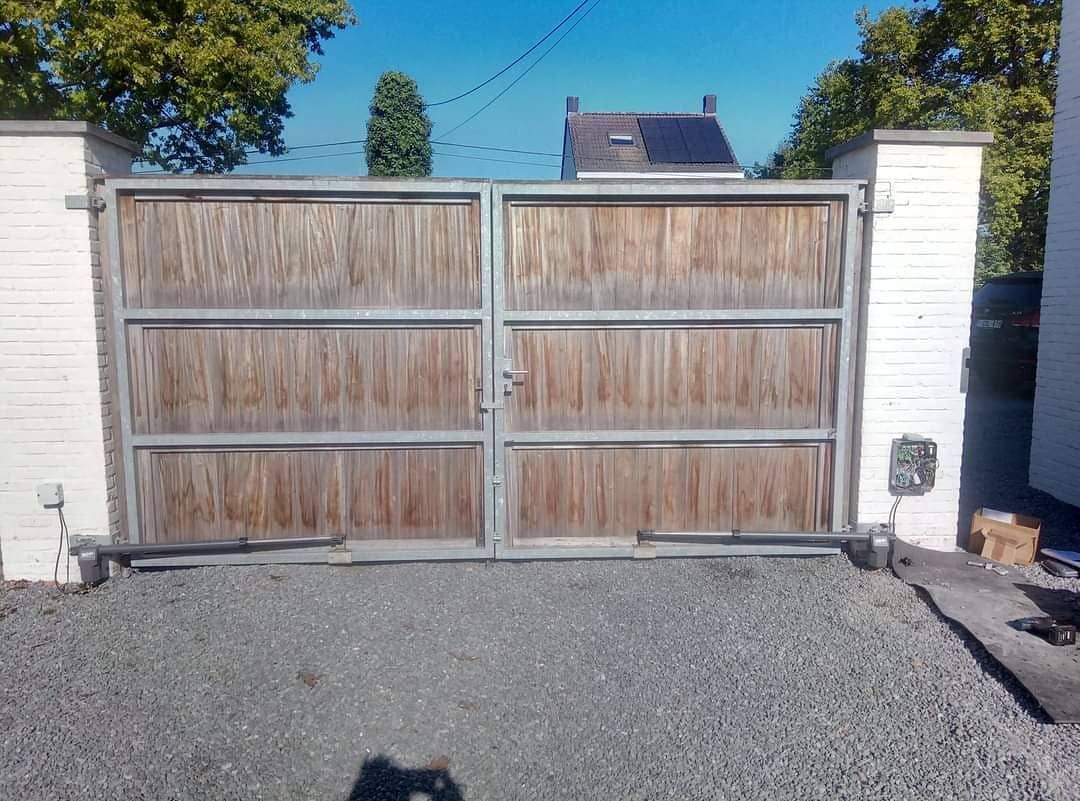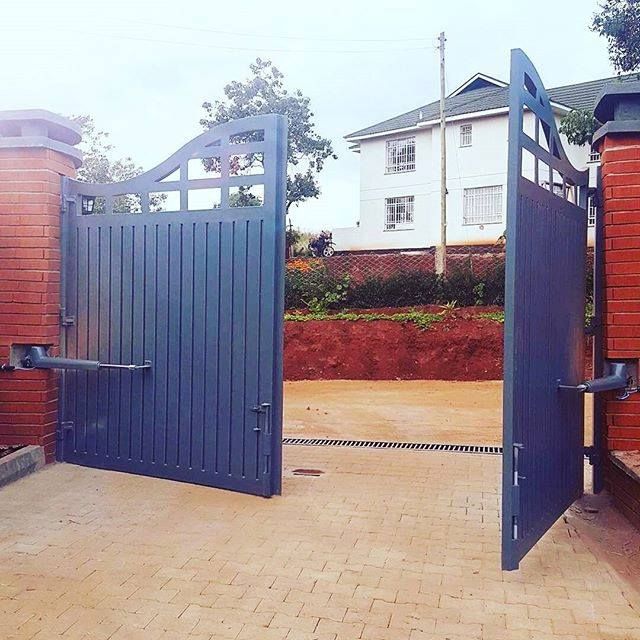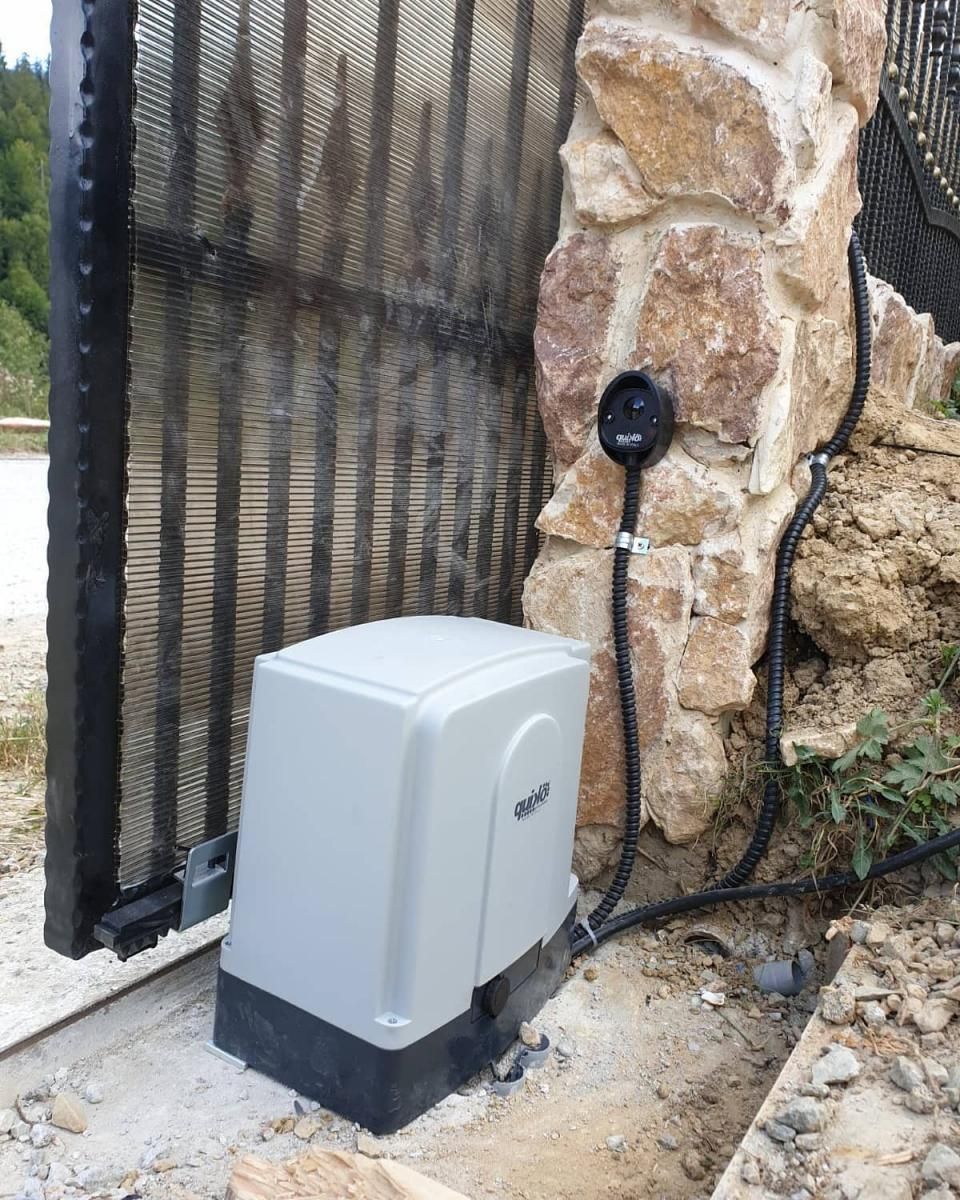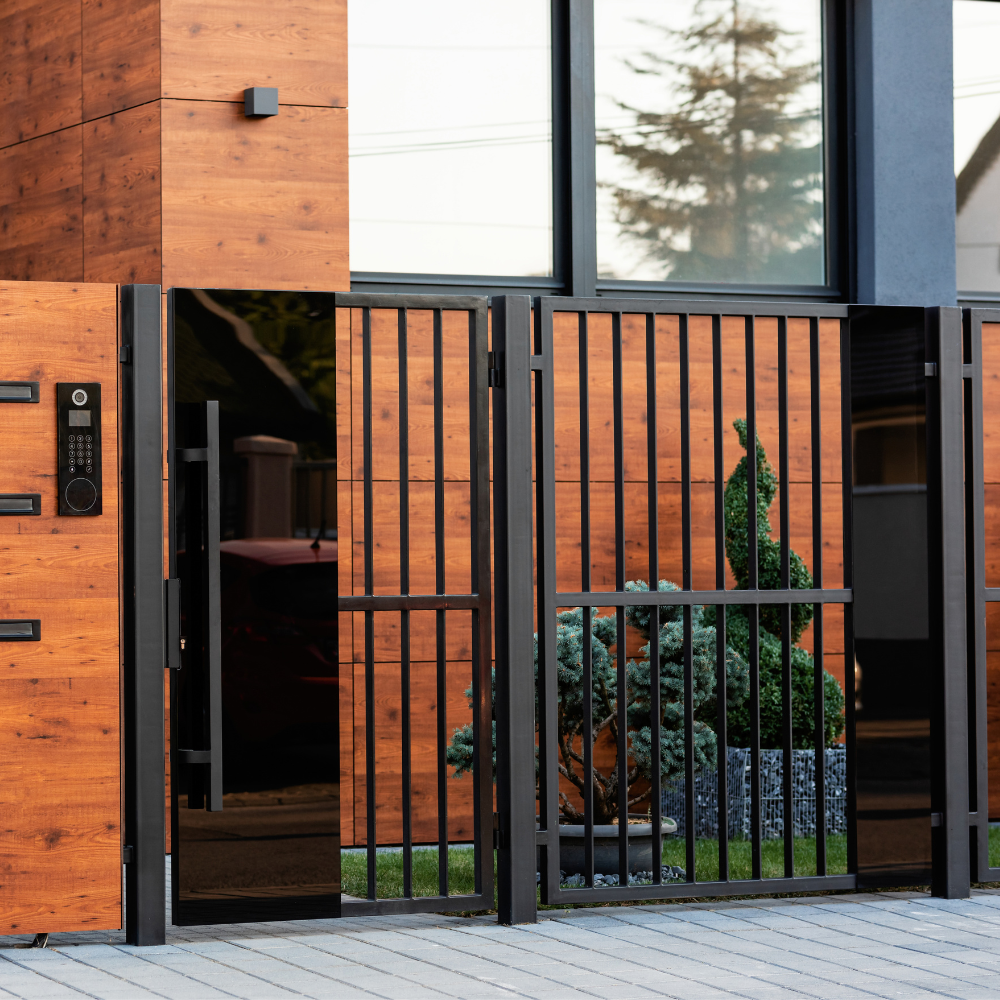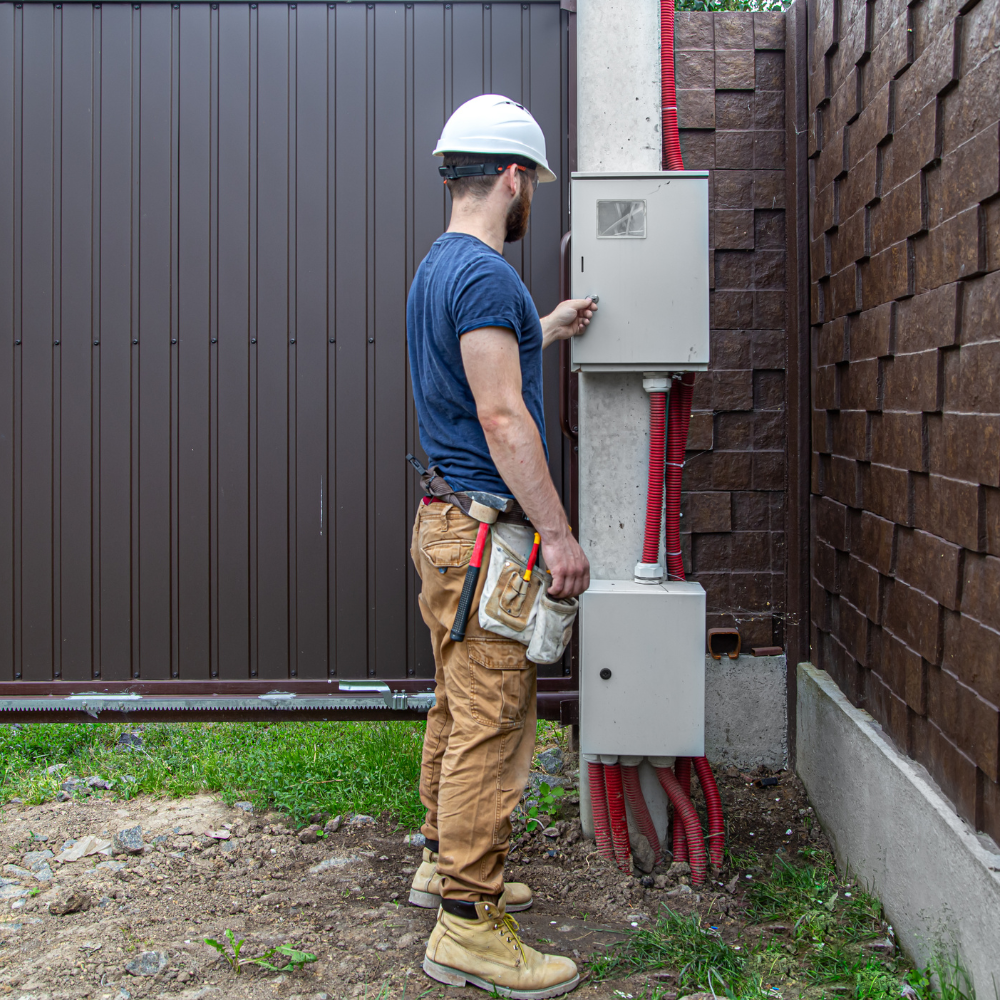Cantilever sliding gates: complete installation guide and design insights
Are you tired of gates that jam with debris, require constant maintenance, and fail in winter conditions? Cantilever sliding gates eliminate these frustrations by operating entirely above ground level,no tracks, no obstructions, just smooth, reliable performance year-round.
Unlike traditional track-based systems that struggle with snow, leaves, and ground movement, cantilever gate systems deliver professional-grade automation that reduces maintenance costs while enhancing property aesthetics and security. For over five decades, Quiko has engineered automation solutions combining Venetian craftsmanship with cutting-edge technology.
In this guide, you’ll discover exactly how to install a cantilever sliding gate system, select the optimal motor for your application, and understand why this technology has become the professional standard across Europe. By the end, you’ll have the knowledge to implement a gate automation solution that performs flawlessly for decades.
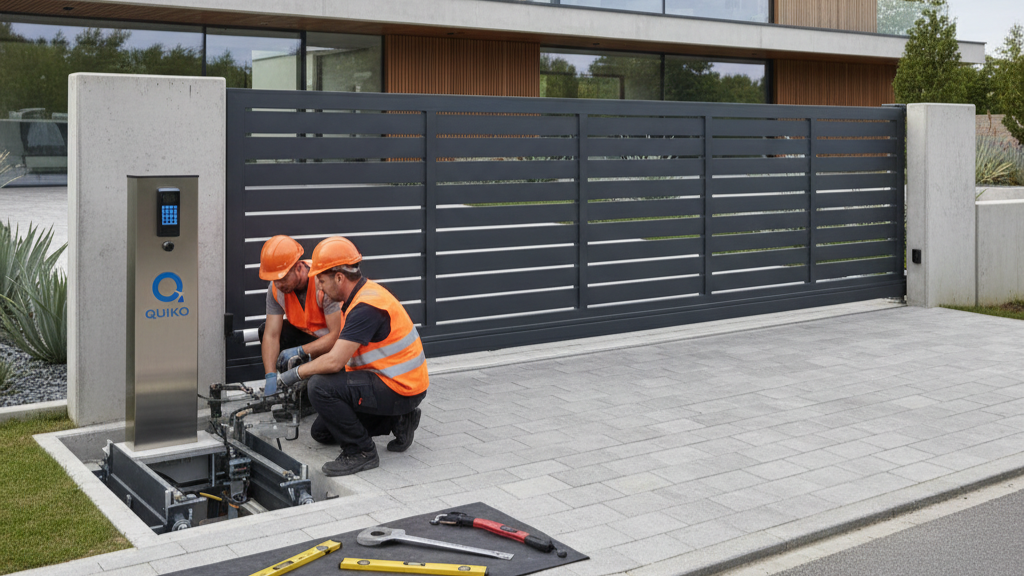
Source: Gemini
What are cantilever sliding gates?
Cantilever sliding gates operate through a self-supporting mechanism that suspends the gate panel entirely above ground level. Unlike conventional sliding gates relying on floor-mounted tracks, cantilever gate systems distribute the panel’s weight across precision-engineered carriages anchored to reinforced concrete foundations.
The fundamental cantilever gate design incorporates a horizontal guide rail welded to the gate’s lower structural frame. This rail engages with sealed bearing assemblies housed within support carriages, creating frictionless gliding motion that eliminates ground contact throughout the gate’s travel path.
This engineering approach delivers consistent performance regardless of environmental conditions. Snow accumulation, debris, and ground settlement,common obstacles for track-based systems,have no impact on cantilever gate operation. Modern cantilever sliding gates accommodate panel weights from 400 kg to over 2000 kg, with opening widths extending beyond 12 meters when properly engineered.
Cantilever gate design fundamentals
Effective cantilever sliding gate design begins with understanding load distribution principles. The gate panel functions as a cantilevered beam, with structural forces concentrated at carriage mounting points.
Critical design parameters
The counterbalance ratio determines how far the gate extends beyond the opening when closed. Typically, cantilever gate designs incorporate a counterbalance section equal to 40-50% of the opening width, distributing weight across support carriages and preventing tipping moments during operation.
Frame construction must provide sufficient rigidity to resist deflection under load. Steel frames typically employ rectangular hollow sections (RHS) with welded corner reinforcement to maintain dimensional stability. For gates up to 5 meters wide, 60x40x3mm RHS typically suffices for the main frame perimeter.
Rail alignment represents the most critical accuracy requirement in cantilever gate systems. The horizontal guide rail must remain perfectly straight and parallel to the foundation throughout its entire length. Deviations exceeding 2-3 millimeters will cause binding, accelerated bearing wear, and motor strain.
Learn more about the specific considerations when designing residential and industrial sliding gate systems to meet different operational requirements.
Key components of a cantilever gate system
A complete cantilever gate system comprises precision-engineered components, each fulfilling specific mechanical functions.
Cantilever gate rollers form the foundation of system performance. These assemblies house sealed ball bearings that engage with the horizontal guide rail. Quality cantilever gate rollers incorporate bearing seals that exclude contaminants while retaining lubrication,critical for long-term reliability.
The support carriage assembly mounts rollers to the concrete foundation. Carriages must provide precise vertical and horizontal adjustment capabilities to achieve optimal rail alignment. Cast iron or welded steel constructions offer superior rigidity.
Guide rail specifications directly influence system smoothness. Hot-dip galvanized steel rails provide excellent corrosion resistance, while stainless steel variants suit coastal environments. Rail profile geometry must match carriage roller configuration to ensure proper load distribution.
Upper guide brackets prevent lateral gate movement without restricting horizontal travel. These components incorporate nylon or sealed bearing rollers that guide the upper gate edge.
The cantilever sliding gate motor represents the system’s operational heart. Modern gear motors integrate electronic control boards managing acceleration profiles, obstacle detection, and safety device coordination.
Advantages over track-based systems
The evolution from track-based to cantilever sliding gates reflects fundamental improvements in operational reliability and installation practicality.
Ground-level obstruction elimination represents the most apparent benefit. Floor tracks accumulate debris, leaves, snow, and ice,contaminants interfering with roller movement. Cantilever gate systems operate entirely above ground level, maintaining consistent performance regardless of surface conditions.
Maintenance requirements decrease substantially with cantilever configurations. Cantilever gate rollers, enclosed within support carriages and elevated above ground, experience minimal contamination exposure. Sealed bearing assemblies typically operate for years without maintenance intervention.
Alignment stability improves significantly with cantilever gate design. Ground-mounted track systems depend on continuous foundation support along the entire gate travel path. Cantilever systems concentrate foundation requirements at two or three carriage locations, reducing susceptibility to ground movement.
Safety considerations favor cantilever gate systems for pedestrian-accessible areas. Elevated gates eliminate trip hazards, while modern cantilever sliding gate motors incorporate obstacle detection and automatic reversal functions.
Aesthetic integration creates contemporary, sophisticated entrance presentation. The floating appearance of cantilever gates enhances property value through visual refinement combined with quiet operation and smooth movement.
Discover more about the benefits of automatic sliding gates and why they’ve become the preferred choice for modern properties.
How to build a cantilever gate: materials and foundation
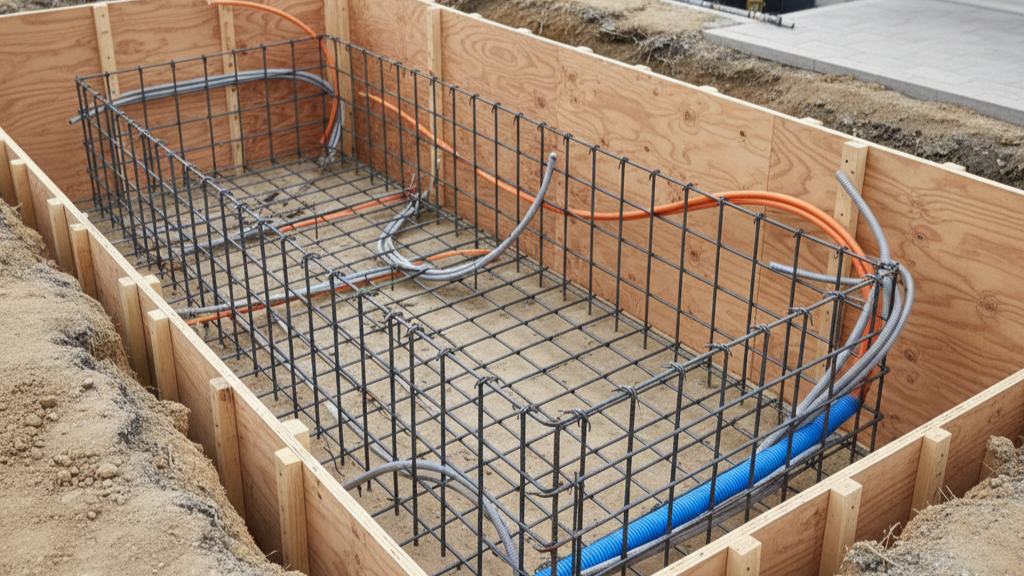
Source: Gemini
Constructing a cantilever gate system requires careful material selection and proper foundation engineering.
Essential materials:
- Structural steel profiles (RHS) appropriate to gate dimensions
- Hot-dip galvanized or stainless steel guide rail (140-150% of opening width)
- Sealed ball bearing carriage assemblies rated at 2x safety factor
- High-strength concrete (minimum 3000 PSI), steel rebar, anchor bolts
- Electrical conduit for power and control cables
Foundation requirements
Excavation dimensions typically extend 400-500mm deep and 350-400mm wide, running the entire gate travel path including counterbalance section. Position steel rebar longitudinally with lateral cross-ties, maintaining proper spacing (200-300mm). Create templates from carriage base plates to mark precise anchor bolt locations.
Route electrical conduit from motor location to control panel before pouring concrete. Pour concrete continuously to avoid cold joints, vibrating thoroughly to eliminate air pockets. Allow minimum 72-96 hours curing time before loading the foundation.
Step-by-step installation process
Professional cantilever sliding gate installation proceeds through systematic phases:
- Phase 1 – Carriage installation. Position support carriages at specified locations. Use laser level to establish perfectly horizontal reference line. Adjust each carriage until top roller surfaces align precisely (tolerance: 1-2mm). Verify spacing against gate dimensions.
- Phase 2 – Guide rail installation. Weld rail to gate frame’s lower structural member, ensuring perfect straightness (maximum 2mm deviation over entire length). Verify alignment and correct heat-induced warping before welds cool.
- Phase 3 – Gate mounting. Position gate panel onto support carriages with mechanical assistance. Verify free movement along full travel path. Adjust carriages to eliminate panel twist or tilt.
- Phase 4 – Upper guide bracket. Mount bracket to support structure, adjusting to prevent lateral movement while allowing unimpeded horizontal travel. Maintain light contact without excessive pressure.
- Phase 5 – Motor installation. Install motor mounting plate perfectly level. Position height to achieve 50% tooth depth engagement between pinion and rack. Attach drive rack to gate frame at 500-600mm intervals.
- Phase 6 – Motor alignment. Mount cantilever sliding gate motor, adjusting position until pinion meshes smoothly with rack teeth throughout full stroke. Torque mounting hardware to specification.
- Phase 7 – Electrical integration. Connect power, control cables, and safety devices according to wiring diagram. Test each safety function independently.
- Phase 8 – Testing and calibration. Execute initial cycles, adjusting acceleration profiles and obstacle detection sensitivity. Complete at least 20 cycles to verify consistent performance and allow mechanical settling.
Following proper automatic gate maintenance guidelines ensures your cantilever system continues performing optimally for years to come.
Cantilever sliding gate motor selection
Motor selection represents one of the most consequential decisions in cantilever gate system design. The drive unit must provide adequate torque while offering control sophistication appropriate to safety and operational requirements.
If you need additional guidance on how to choose the right motor for your sliding gate system, our comprehensive selection guide covers all critical factors.
Critical selection parameters
Gate weight establishes primary sizing criterion. Calculate total gate weight including frame, infill material, and hardware, then include 20-30% safety margin to ensure reliable operation and extended motor life. Undersizing motors leads to premature failure and unreliable performance.
Duty cycle requirements influence motor specification selection. Residential gates typically operate intermittently with extended rest periods between cycles,the VELOS and ZEBRA Series suit these applications perfectly. Commercial and industrial installations demanding frequent continuous operation require the enhanced thermal management and robust construction of MOOVY, ERCOLE, or TITANO Series motors.
Environmental exposure affects motor construction specifications and housing requirements. All Quiko motors feature weather-resistant construction appropriate for outdoor installations, with industrial series offering enhanced protection for harsh environments.
Selecting the appropriate Quiko motor for your cantilever gate
For residential applications with gates up to 600kg, the VELOS or ZEBRA Series provides optimal performance and value. These motors deliver reliable daily operation with minimal maintenance requirements.
Larger residential or light commercial gates weighing up to 2000kg benefit from the MOOVY Series, which offers increased capacity while maintaining efficiency suitable for moderate-frequency operation.
Commercial facilities requiring gates up to 2500kg should specify the ERCOLE Series. This industrial-grade solution handles sustained operation and frequent cycling typical of commercial environments.
Heavy industrial applications with gates up to 6000kg demand the TITANO Series. These motors incorporate three-phase power and oil-bath gearboxes engineered for continuous intensive use, representing Quiko’s most robust automation solution.
Quiko’s cantilever sliding gate motors
Quiko offers several specialized motor lines engineered for cantilever sliding gate applications, ranging from residential to heavy-duty industrial installations.
The VELOS and ZEBRA Series serve residential applications with gate weights up to 600kg. Constructed from die-cast aluminum, steel, and bronze, these motors provide reliable performance for typical home installations. The VELOS incorporates an emergency manual release with key access, ensuring operation during power failures.
The MOOVY Series addresses larger residential and light commercial requirements, accommodating gate weights up to 2000kg. This mid-range solution bridges residential and industrial applications, offering enhanced capacity without requiring full industrial specifications.
For demanding commercial environments, the ERCOLE Series delivers industrial-grade performance for gates up to 2500kg. These motors handle sustained operation under heavy loads and frequent cycling demands typical of commercial facilities.
Quiko’s flagship TITANO Series represents the ultimate in heavy-duty industrial automation, capable of automating gates weighing up to 6000kg. Constructed with highly resistant components, TITANO motors feature three-phase, self-ventilated gearmotors with oil-bath gearboxes engineered for intensive continuous use. This series suits the most demanding industrial applications where reliability and power are paramount.
Common features across Quiko’s sliding gate motor lines
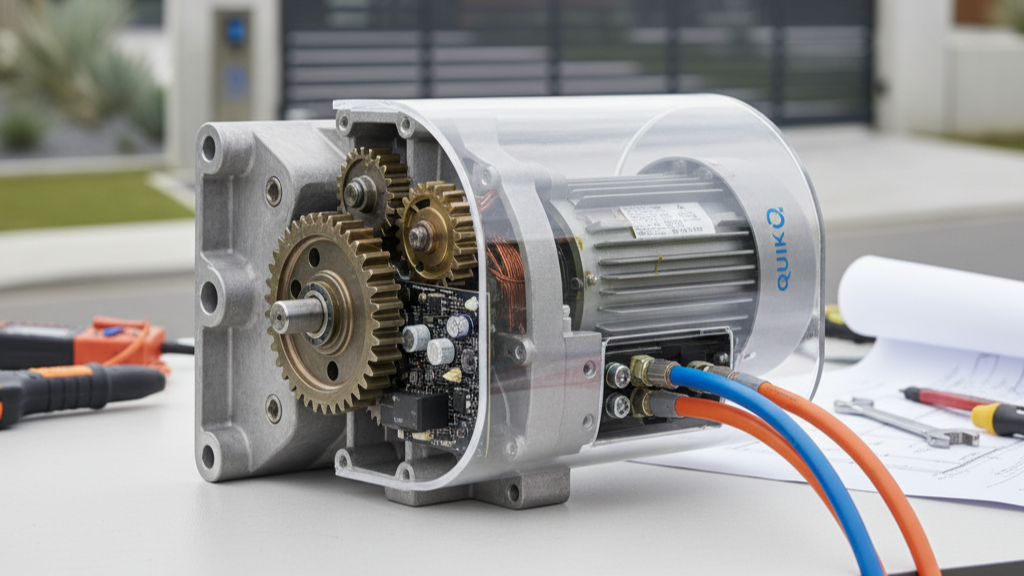
Source: Gemini
Durability represents a core design principle. Motors incorporate robust materials, with industrial series featuring oil-bath gearboxes that deliver long-lasting performance during heavy use cycles. This construction approach significantly extends operational life compared to standard sealed gear systems.
Manual override capabilities ensure accessibility during power failures. Most systems include mechanical unlocking mechanisms allowing manual gate operation, critical for maintaining access during emergencies or maintenance procedures.
Customization options accommodate specific application requirements. Quiko’s technical support team provides dedicated assistance in configuring solutions that address unique installation challenges or operational demands.
Safety integration remains paramount across all product lines. Many systems incorporate mechanical clutches for soundless operation and accommodate optional safety accessories including optical beam sensors for obstacle detection and automatic reversal functions.
Explore Quiko’s complete motor range and find your perfect automation solution today.
Conclusion
Throughout this guide, we’ve explored how cantilever sliding gates eliminate the maintenance headaches and performance limitations of traditional track-based systems. From understanding the critical importance of foundation preparation and precise carriage alignment, to selecting the right motor for your specific application,each element contributes to a system that operates flawlessly for decades.
The key takeaway? Quality components and professional installation methodology create automation systems that deliver measurable value: reduced maintenance costs, enhanced safety, superior aesthetics, and operational reliability regardless of weather conditions. When you choose cantilever gate systems powered by proven engineering like Quiko’s VELOS, MOOVY, ERCOLE, or TITANO motors, you’re investing in Italian craftsmanship refined through fifty years of manufacturing excellence.
Now we’d like to hear from you: Are you planning a cantilever gate installation? What challenges are you facing with your current gate system? Share your questions or experiences in the comments below,our community of professionals and property owners can provide valuable insights based on real-world applications.
Ready to transform your property entrance with professional-grade automation? Explore Quiko’s complete range of cantilever sliding gate motors and discover additional installation guides, technical specifications, and case studies on our blog.
Your journey to maintenance-free, reliable gate automation starts here.
